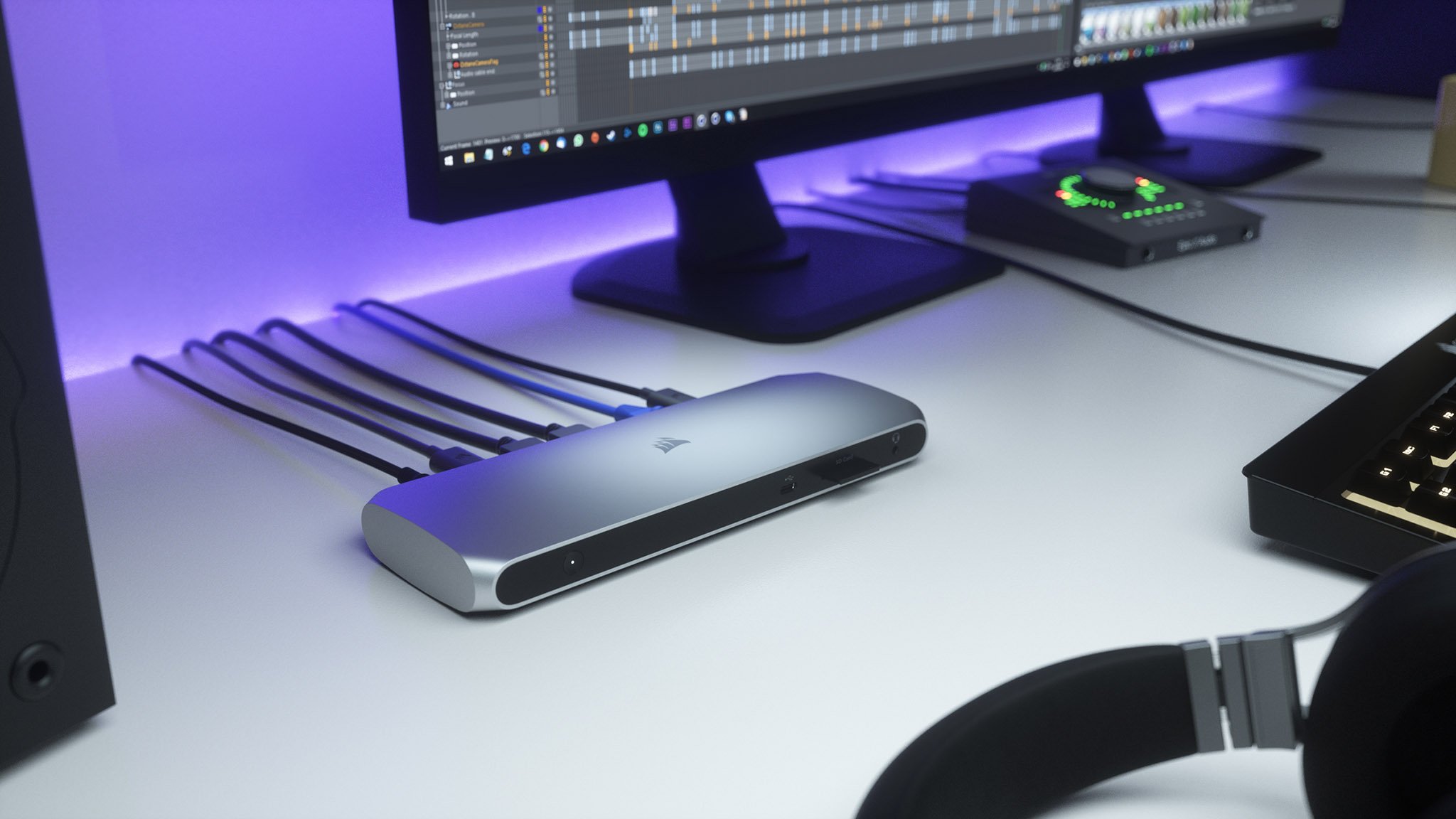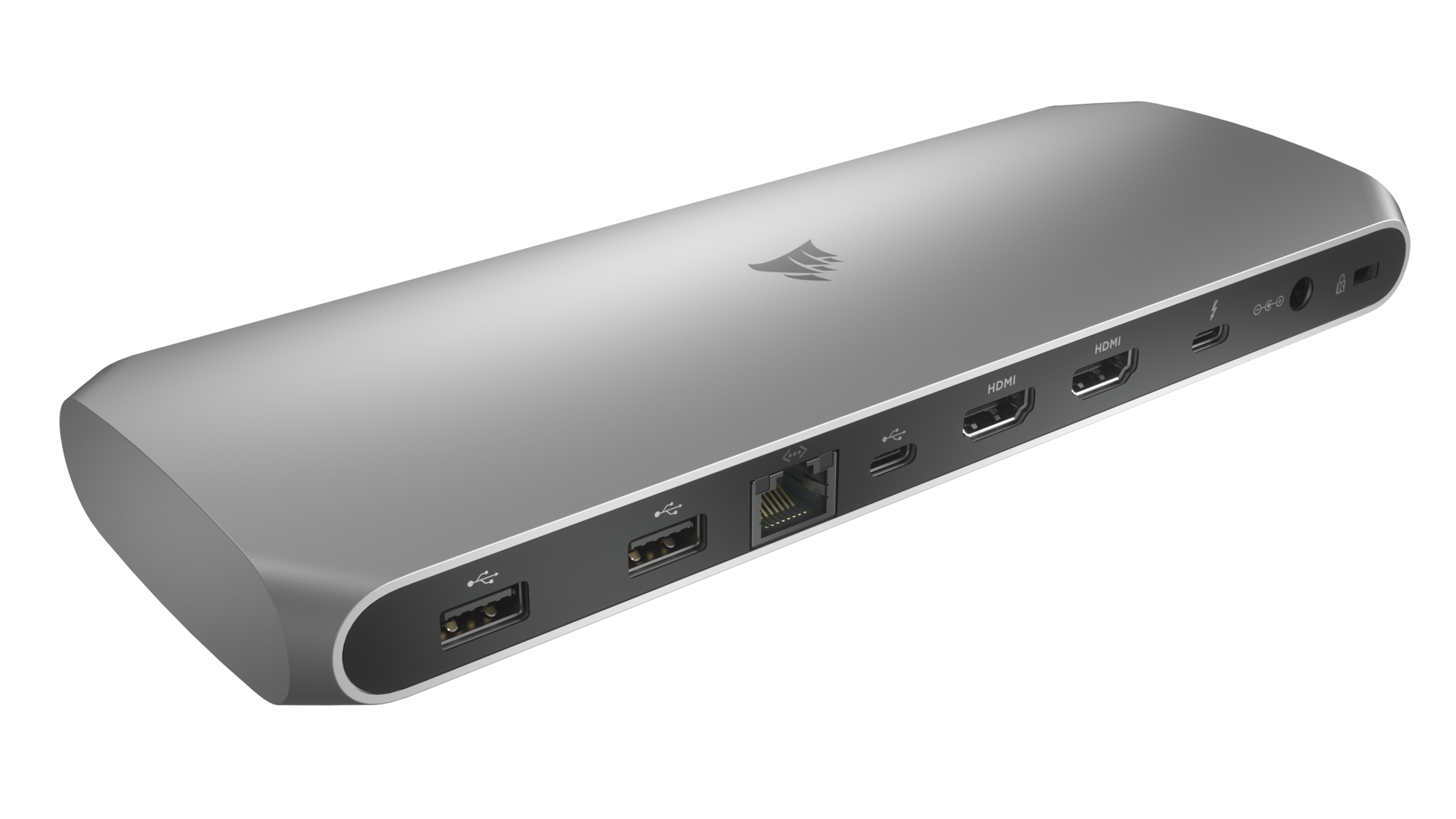Corsair's TBT100 Thunderbolt 3 dock has all the ports you need
With nine different ports on offer, Corsair's latest Thunderbolt 3 dock may just be the only dock you need.

What you need to know
- The TBT100 is Corsair's latest Thunderbolt 3 dock, and it is now available for $260.
- It has two USB-A ports, two HDMI ports, an Ethernet port, SD card reader, as well as two USB-C port.
- The dock is able to deliver up to an 85W charge.
Corsair sub-brand Elgato has a few Thunderbolt 3 docks, and the component manufacturer is now rolling out a new option under its own label. The TBT100 Thunderbolt 3 dock is now available for $260, and it lets you connect a host of accessories with just one cable.
Thunderbolt 4 is now official and the standard should make its way to devices over the coming months, but for now, Thunderbolt 3 is still the de facto standard. Here's a breakdown of all the ports available with the TBT100:
- 2 x USB-C 10Gbps
- 2 x USB-A 5Gbps
- 1 x Gigabit Ethernet
- 2 x HDMI 2.0
- 1 x SD card reader
- 1 x 3.5mm jack
Thunderbolt 3 offers a maximum bandwidth of 40Gbps, and that's segmented into smaller chunks for USB-C, USB-A, and HDMI. There's enough bandwidth to drive two 4K screens at up to 60Hz, and you get a built-in 3.5mm jack. The TBT100 also delivers up to an 85W charge for devices, and you can also use the dock's USB-A or USB-C ports to charge phones at up to 30W.
Obviously, you'll need a machine with a Thunderbolt 3 port to be able to take full advantage of the TBT100. If you're interested, we've collated the best Thunderbolt 3 laptops in 2020. Corsair's TBT100 works with both macOS and Windows machines, and it is now available for $260.
All the latest news, reviews, and guides for Windows and Xbox diehards.

Harish Jonnalagadda is a Senior Editor overseeing Asia for Android Central, Windows Central's sister site. When not reviewing phones, he's testing PC hardware, including video cards, motherboards, gaming accessories, and keyboards.

